A popular wearable tech item for outdoor enthusiasts, GPS watches combine the features of a traditional watch, or smartwatch, with a Global Positioning System receiver. As a device that can help you navigate your way through unfamiliar terrain, monitor distance and pace, and provide elevation and weather data, a GPS watch is a great gadget for hikers.
Navigating your way through the various models however can be tricky, with such an abundance of functions, brands and price tags to consider. To help you out, outdoor gear reviewer Rob Slade has put nine models to the test.
The reviews below are based on battery life, ease of use, navigation and training features, so you can find a GPS watch to suit your outdoor pursuit of choice.
Not sure where to start? Jump to our short buyer's guide on how to choose a GPS watch.
Best GPS watches at a glance:
- Best for usability: Garmin Fenix 7 Pro Solar (
£749.99£590) - Best smartwatch features: Apple Watch Ultra (
£699.00£622.17 - Best for navigation: Garmin Forerunner 955 (
£479.99£359.99)
Reviews edited by Rachel Howatson
Best GPS watches for 2024
Garmin Fenix 7 Pro Solar
Best for usability
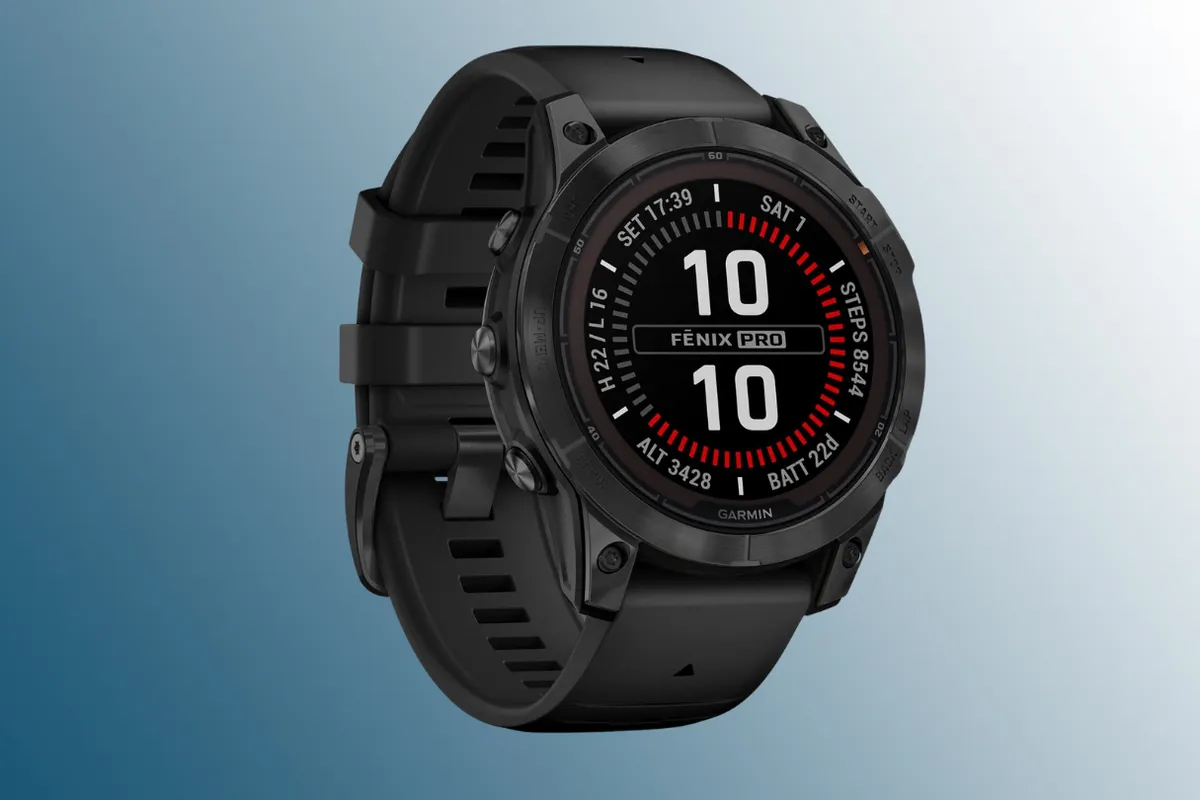
- RRP £749.99 as tested (£559.99 for the standard 47mm version)
- Weight 79g
- Display type Sunlight-visible, transflective memory-in-pixel (MIP)
- Display size 1.3in (33mm)
- Battery life 18 days (22 for the Solar model) in smartwatch mode; 40 hours with full GPS (48 hours in solar)
Designed for adventure, the Garmin Fenix 7 Pro Solar features a tough Power Glass display, a stainless steel bezel and a fibre-reinforced polymer case. This GPS watch feels premium and is packed with impressive features.
It's straightforward to use whether you're new to Garmin, or a loyal follower of the brand's gear. A great navigational aid too — sync up with Garmin Connect, and benefit from turn-by-turn directions and alerts when you wander off track.
You've got pretty much everything you may need in terms of training and performance features, including dozens of activity profiles, training readiness, recovery time and hill score. The addition of an LED flashlight (with around four metre reach) makes this GPS watch a nifty camping gadget too.
Pros: Excellent usability, very good battery life, class-leading features
Cons: Expensive, may be oversized or overkill for some
For more detail, head to our full review of the Garmin Fenix 7 Pro Solar.
Garmin Forerunner 955
Best for navigation
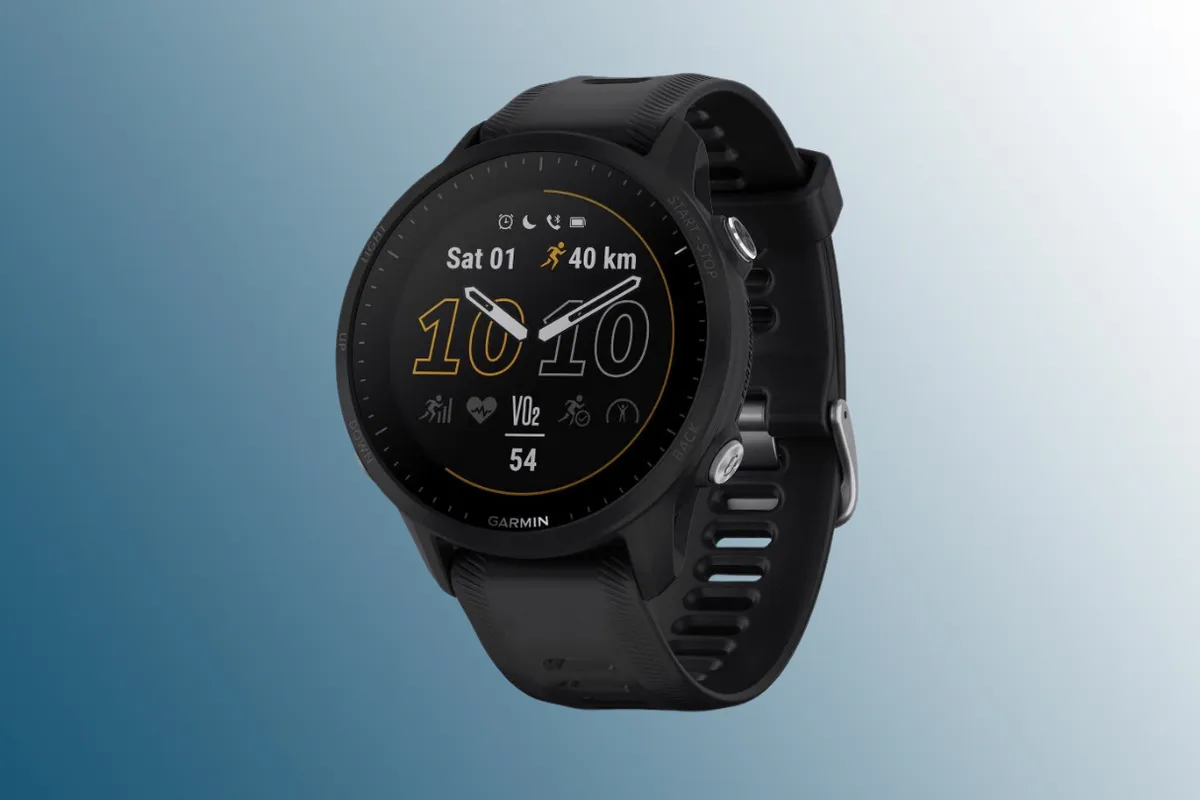
- RRP £479.99 (£549.99 for solar)
- Weight 53g
- Display type Sunlight-visible, transflective memory-in-pixel (MIP)
- Display size 1.3in
- Battery life 15 days in smartwatch mode, 20 hours in full, multi-band GPS mode
We were impressed with the lightweight yet durable feel of Garmin's Forerunner 955.
Featuring the traditional five-button design, and an optional touchscreen function - the smooth interface proved incredibly responsive on test - this GPS watch offers excellent usability. As usually the case with Garmin models, navigation proved very good, and you can create your own routes using Garmin Connect (through the app or on the website). The accurate GPS is fast to kick in once you're on the move.
There are lots of sports profiles to explore, including hiking, climbing, mountain biking and skiing and with 32GB of onboard storage, you an add music to your watch and listen as you run. There's also a sunset/sunrise feature so you can perfectly time your hike!
Battery life isn't the best on the market, but if you're after a lightweight, fully-featured and accurate GPS watch, the Garmin Forerunner 955 will do the job well.
Pros: Fantastic usability, impressive features, excellent navigation
Cons: Battery life isn’t as strong as some competitors
Head to our full review of the Garmin Forerunner 955.
Suunto Vertical Titanium Solar
Impressive battery life
Buy now from Ordnance Survey (£725.00), Alpinetrek (£724.95)
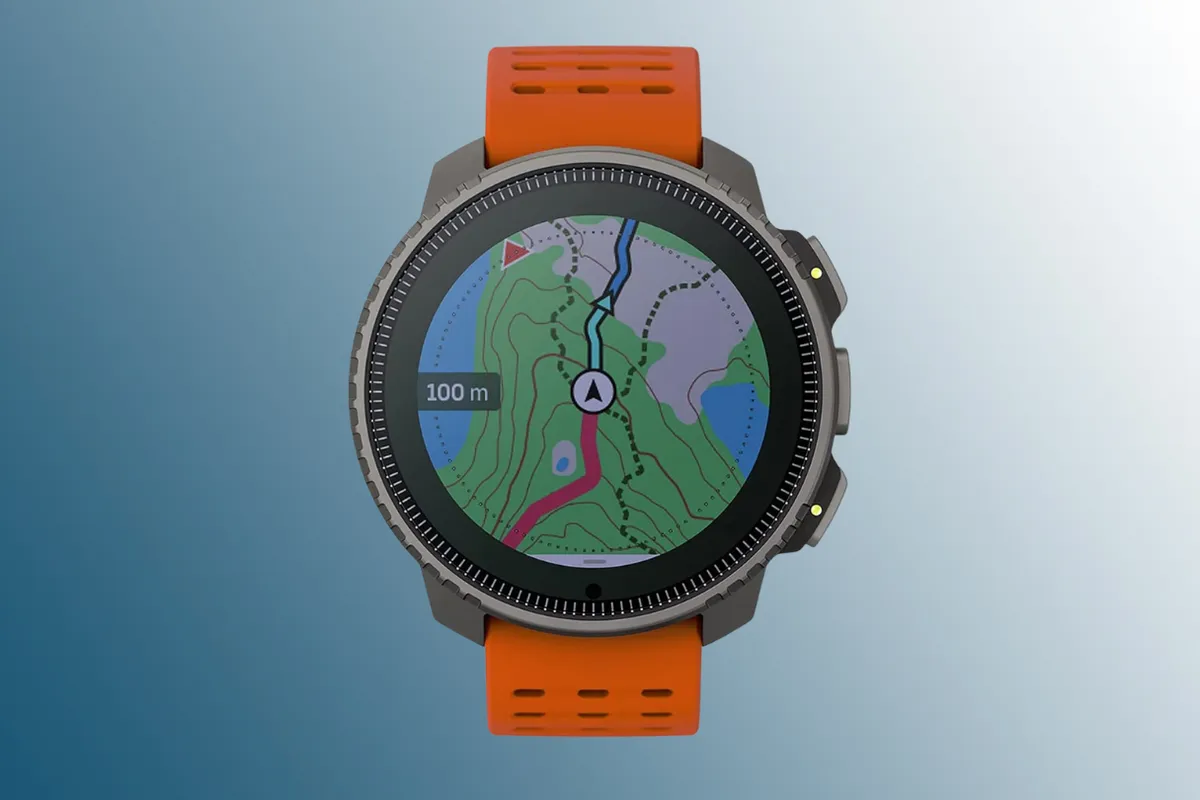
- RRP £725 (£545 non-solar)
- Weight 74g
- Display type Matrix
- Display size 1.4in
- Battery life 30 days (60 for the Solar model) in smartwatch mode; 60 hours with full GPS
With a large watch face, titanium case and bold orange band, we can't deny the Suunto Vertical Titanium Solar its good looks. The design is on the chunky side though, and our tester found it wasn't the most comfortable watch to wear.
The three buttons are easy to use, even when wearing gloves, and there's a touchscreen, albeit slightly laggy, too.
As for navigation, we were really impressed. Thanks to the large screen, you've got a decent view of maps, and you can view features such as lakes and contours when hiking, plus your own location on the map. The Suunto app is another plus, allowing you to plan routes and import GPX files which can then be synced to the watch with offline maps.
An impressive battery life also makes this watch a desirable pick for multi-day hikers.
Pros: Excellent battery life, very good navigation
Cons: Uncomfortable for this tester, interface is a bit laggy
Apple Watch Ultra
Best smartwatch features
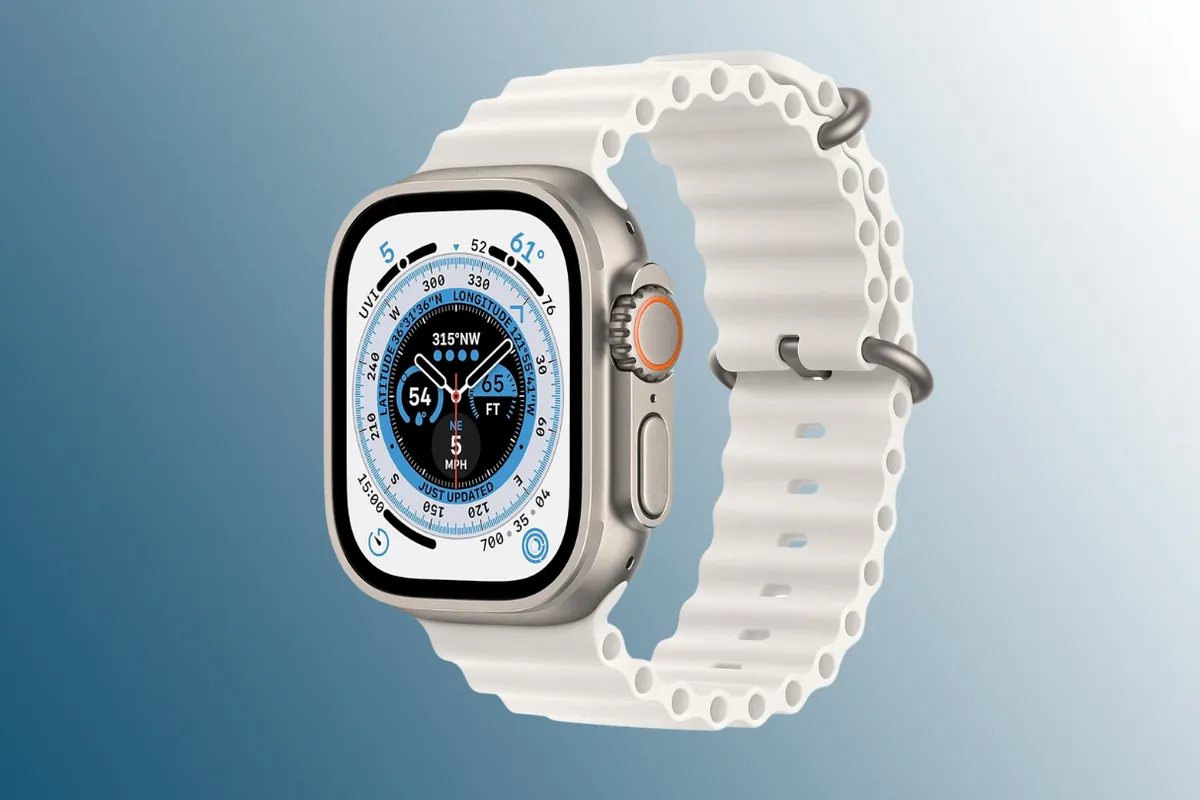
- RRP £849
- Weight 61.3g
- Display type Always-On Retina LTPO OLED display
- Display size 49mm
- Battery life 36 hours normal use and 18 hours in full GPS mode
Arguably the king of smartwatches, the Apple Watch Ultra features weather reports, contactless payments, sleep tracking, a torch and a siren alarm. There are also dozens of sports profiles to select from, and there's the option to create your own custom workouts. You'll need an iPhone, and if you're familiar with Apple functions, you'll find this watch easy to use.
A downside is the navigation. The Apple Watch Ultra only comes with the standard Maps app, which you may already use on your phone. This is great if you're running urban routes, but it's not ideal if you're heading further afield. There is however a compass, and altitude, longitude and latitude details are all included. Plus, you can use the backtrack functionality to get back to your starting point.
A second version, the Apple Ultra 2, has recently been announced.
Pros: Fantastic display, lots of features
Cons: Expensive, no navigation
For more detail, check out our full review of the Apple Watch Ultra.
Garmin Instinct 2 Solar
Best value
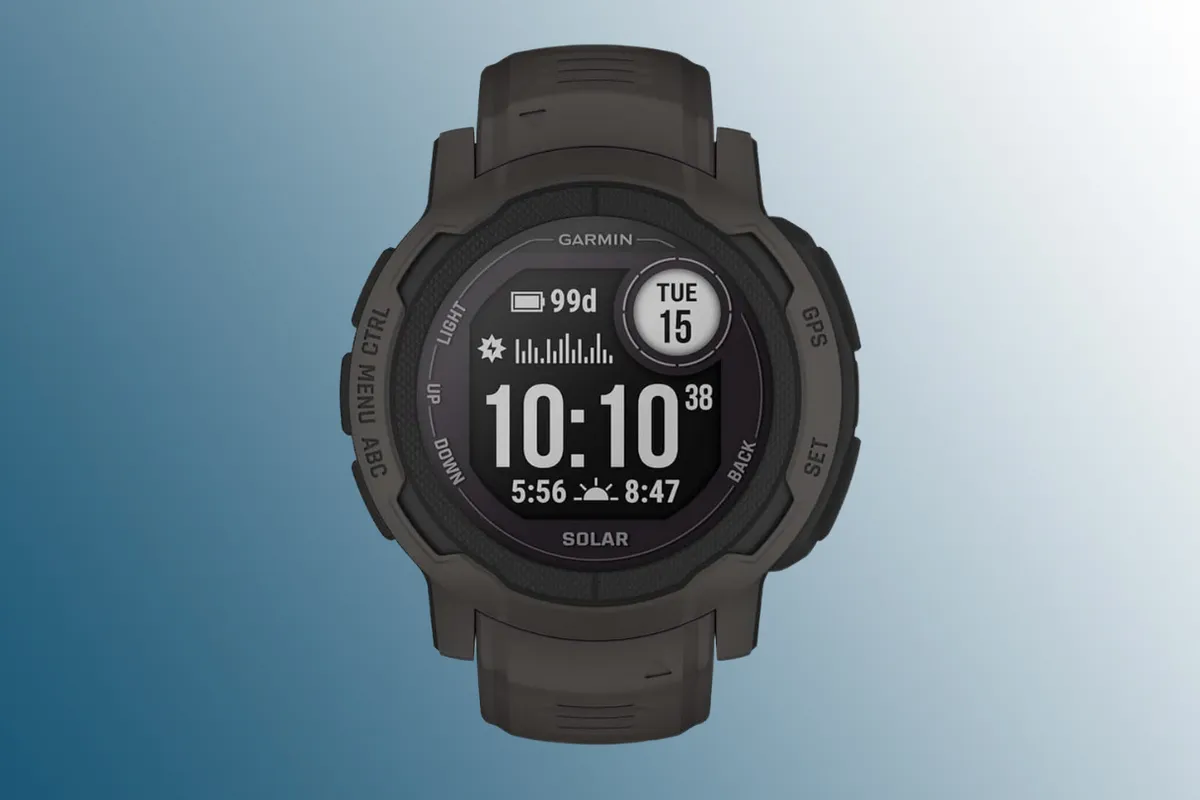
- RRP £349.99 (solar, 45mm); £249.99 non-solar
- Weight 53g
- Display type Monochrome, sunlight-visible, transflective memory-in-pixel (MIP)
- Display size 0.9in (23mm)
- Battery life 28 days (unlimited in its solar guise) in smartwatch mode; 30 hours in GPS mode (48 with solar)
With its great battery life and accurate data, plus the reasonable price tag, there's plenty to like about Garmin's Instinct 2 Solar. We appreciate its durable nature - it can handle a few bumps easily enough - and the watch felt comfortable at all times on test, whatever the activity.
There's no touchscreen with this design, but the brand's trademark five-button setup is on hand. Garmin's Instinct 2 Solar features a monochrome display. It's not as clear as the colourful screens found on the Forerunner models, but it's still legible nonetheless. A duller screen however allows for an ace battery life, so you may be willing to make that compromise.
If you're planning to hit the hills, the compass, altimeter and barometer are sure to come in handy, and you can plan and load up your own tracks via the Garmin Connect web app.
Pros: Durable, great functionality, cheaper than many other GPS watches
Cons: Monochrome screen a little dull, only breadcrumb-style mapping
Want to know more? Read our full review of Garmin's Instinct 2 Solar.
Suunto 9 Peak Pro
Best for sleek aesthetics
Buy now from Alpinetrek (£428.95 £300.27)
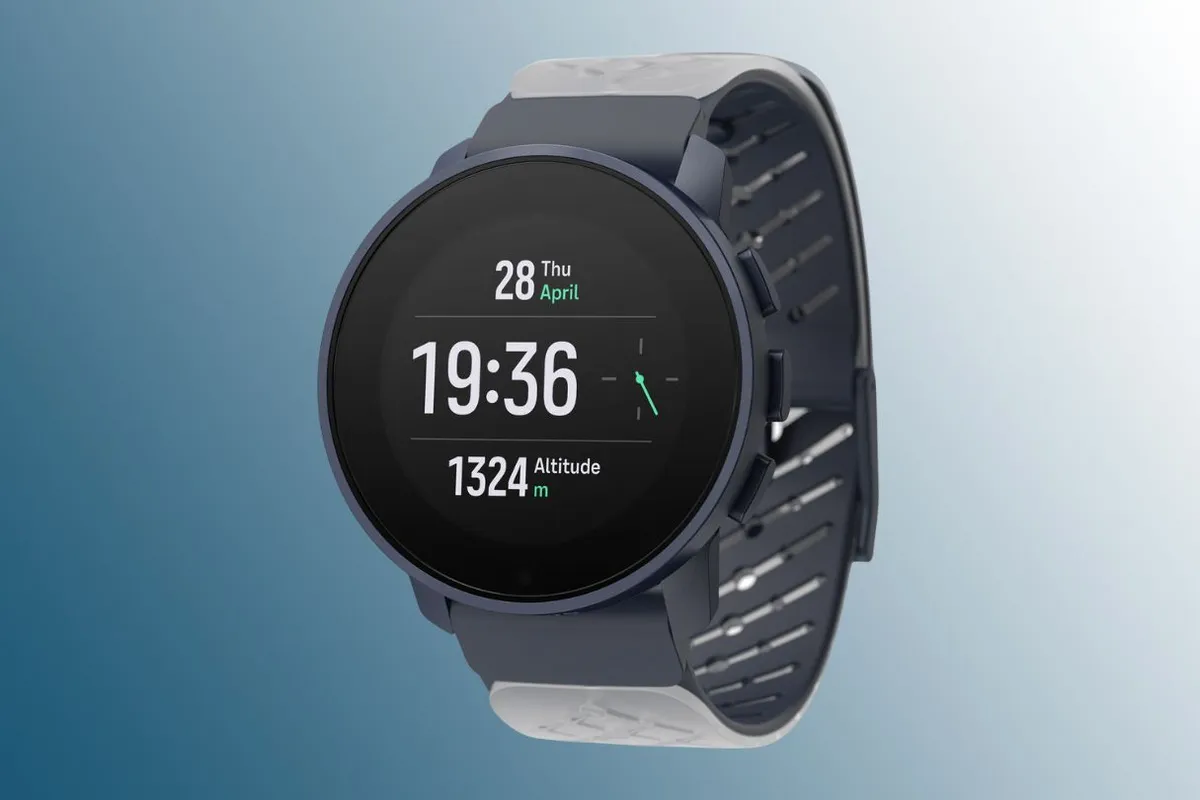
- RRP £419
- Weight 64g
- Display type Matrix
- Display size 1.2in (30.5mm)
- Battery life 21 days in smartwatch mode and 40 hours in full GPS mode
If you're after a smart-looking sports watch, the Suunto 9 Peak Pro is a great-value option. The watch face is on the small side, at 43mm by 43mm, and the interface isn’t the smoothest, but there are still plenty of positive features, and on test we really warmed to this model.
As a brand, Suunto makes it easy to create your own routes, through the accompanying app on your phone, or you can import a GPX route which again is an easy task to do. We found the GPS to be largely accurate, and you've got your typical phone notifications, step count and sleep tracking features to play around with too.
The battery life is decent, making this a top pick for back-to-back hiking.
Pro: Beautiful design, good battery life, strong set of features
Cons: Screen isn’t the brightest, interface has some lag
Read our full review of the Suunto 9 Peak Pro.
Polar Pacer Pro
Best for a budget

- RRP £289
- Weight 41g
- Display type MIP
- Display size 1.2in (30.5mm)
- Battery life 144 hours in watch mode, 25 hours in training mode (with GPS)
You'll struggle to find a watch with GPS tracking, multisport functionality and a range of training features cheaper than the Polar Pacer Pro.
In terms of design, this model doesn't have the same gravitas as some of the other best GPS hiking watches available, with a 'sports watch' rather than 'rugged' aesthetic. You've got five buttons for control (no touchscreen), and it's all very straightforward to use.
The breadcrumb-style navigation lets you load up a route and follow it as a line on a blank background, which is fine if you're happy to skip the detail.
There are over 100 sport profiles to choose from, and we were impressed with the Hill Splitter feature which detects how many uphills and downhills you tackle.
While this watch may struggle to keep up with competitors, it does a lot of the basics well.
Pros: Good price, accurate HR data, lots of performance info
Cons: Screen could be better, mediocre battery life
Interested? Check out our full review of the Polar Pacer Pro.
Polar Grit X Pro
Great training features

- Price £459
- Weight 79g
- Display type MIP
- Display size 1.2in (30.5mm)
- Battery life Up to 168 hours in watch mode
Polar is renowned for its excellent training features, and the Grit X Pro is no exception. There's space for 20 sports profiles, but you've got over 100 to choose from.
There are five button controls and a touchscreen, and while there's only one screen size available, the displayed data was easy to read and consume on test.
In terms of navigation, it works fine and is functional, but lacks some of the detail offered by key players in the market.
As a modern GPS watch, you can make use of general smartwatch features including phone notifications, music controls and weather reports.
Pros: Suitably rugged, great training features
Cons: No detailed mapping, not the smoothest interface
You can also read Rob's full review of the Polar Grit X Pro.
Polar Ignite 3 Titanium
Best for wellness tracking

- RRP £324
- Weight 36g
- Display type AMOLED
- Display size 1.28in
- Battery life 120 hours in watch mode; 30 hours in training mode with GPS
If you'd rather opt for a sleeker design, over the chunkier, more rugged models, Polar's Ignite 3 Titanium may take your fancy. The touchscreen is smooth and lovely to use, and the colours and details are bright and vibrant thanks to an AMOLED screen. View at a glance with ease whilst out and on the move.
While you can track activities and view your path on the app, there's no mapping on the watch. There's a 'back to start' function which will get you back to your starting point, but we found the GPS wasn't the most accurate.
So if you're looking for a watch to track your fitness and wellness, and have no desire to use this device as a navigational tool, the Polar Ignite 3 Titanium could work for you, but outdoor enthusiasts will want a more advanced model.
Pros: Comfortable, good touchscreen, sleek design, accurate HR monitor
Cons: Navigation lacking, GPS isn’t always accurate to the detail
Read our full review of the Polar Ignite 3 Titanium for more detail.
Take a look at our expert reviews of the best walking shoes and the best walking boots for more outdoor kit.
How to choose a GPS watch
Ease of functionality
When you're out in the hills, or battling the elements, you want a GPS watch that's straightforward to use. A lagging touchscreen, or fidgety button will just slow you down. In terms of control functions, touchscreen, buttons, or a mix of both are all available, so finding a model with your preferred interface is a good place to start. You can even find GPS watches with optional touchscreens, as you may wish to switch it off when recording an activity.
Navigation
An important feature for hikers in particular, navigation can really vary from model to model. More advanced models allow you to plan routes through an app, which can then be transferred across to your watch. So you can find a route on the Ordnance Survey app for example, and sync it up to your watch. You can access elevation information, a full-colour map showing the route and your location, and the direction of your chosen path.
For less detail, and for a more affordable price, you can opt for breadcrumb-style navigation which lets you follow a predefined course.
You can also look out for 'back-to-start' functions. The GPS watch tracks your path so you can retrace your route and get back to your starting point.
GPS accuracy, and how quickly your watch picks up your location, are features to consider. You may find different modes on your watch offer varying degrees of accuracy. Plus, features such as compasses, barometers and altimeters will come in handy when navigating unknown terrain, so remember to check out all additional features before purchasing.
Performance features
When shopping around for a GPS watch, you'll find a huge catalogue of in-built training and performance features available. Even GPS watches at the lower end of the price scale often offer hundreds of sport profiles, as well as speed, distance and heart rate monitoring.
More specialised features such as recovery metrics, training readiness and sleep tracking may be important to you if you're training for a specific event, while activity-specific features such as hill splitters may be more of a priority if you're focused on one sport in particular.
Battery life
If you're tackling multi-day hikes, a decent battery life is key. Solar charging features can be found on the more advanced models, and you'll find your GPS mode will drain your battery at a faster rate than your watch or smartwatch mode. Battery life can also depend on the presence of additional features, so it's best to think about which features you'll actually use before making your decision.
With certain models offering battery lives of up to 30 days, you can easily find a GPS watch to suit off-grid adventures.
Are GPS watches worth it?
A question worth asking considering GPS watches can set you back hundreds, sometimes thousands. A GPS watch is useful to hikers and trail runners looking to accurately track routes, distances, and elevation changes, and can function as a safety tool too if you find yourself in unknown territory.
Other people who will certainly benefit are those with specific fitness and training goals. However, a smartwatch or fitness tracker may do the job if it's general day-to-day fitness you're tracking. GPS watches are designed for more rugged, outdoor use — hence the bulky, hardwearing designs — so it's worth thinking about whether you'll really put the durable and expensive gadget to use before investing.
What is the difference between GPS and cellular?
You can use your cellular watch to make phone calls, send text messages, and access the internet without being paired to a smartphone. A standard GPS watch needs to be paired to your smartphone to offer such a service.
Do GPS watches work everywhere?
In principal, yes. However, the accuracy of GPS can depend on your surroundings. Location tracking tends to be highly effective in open outdoor environments. Challenging conditions, or areas with limited satellite visibility may have a negative impact on the performance of your GPS watch.
For more outdoor gear reviews, read our roundup of the best trail running shoes.
